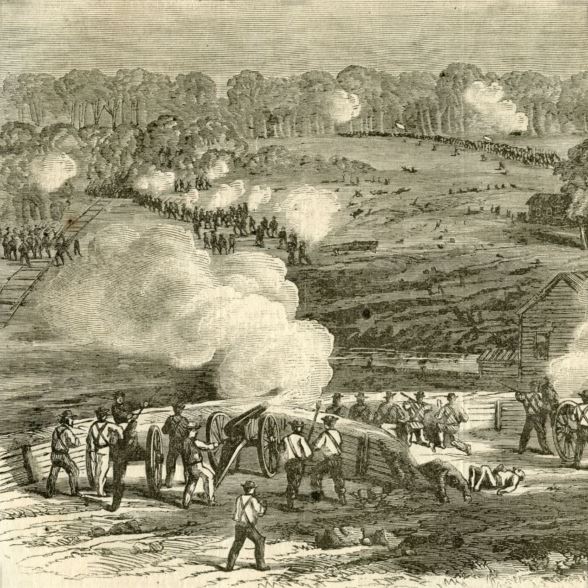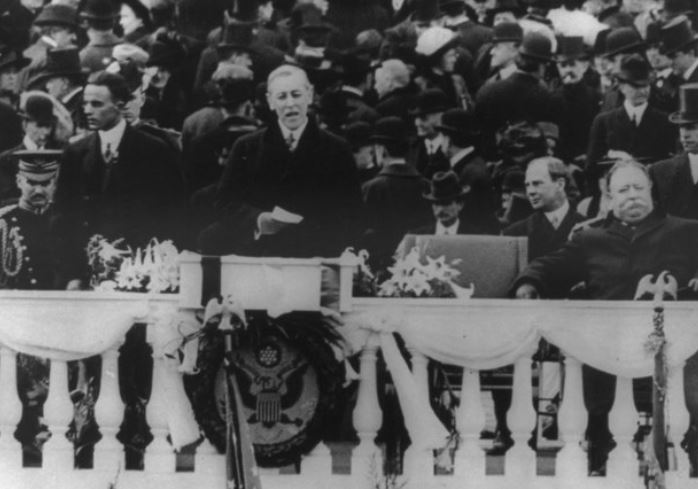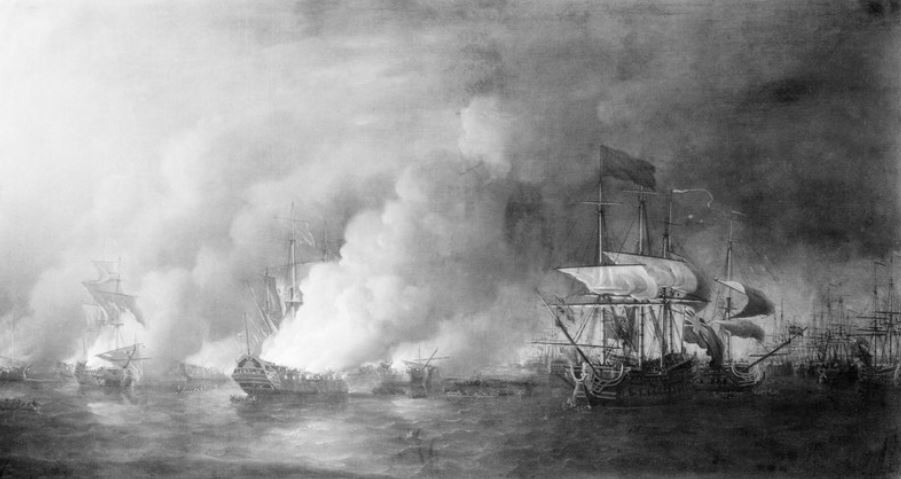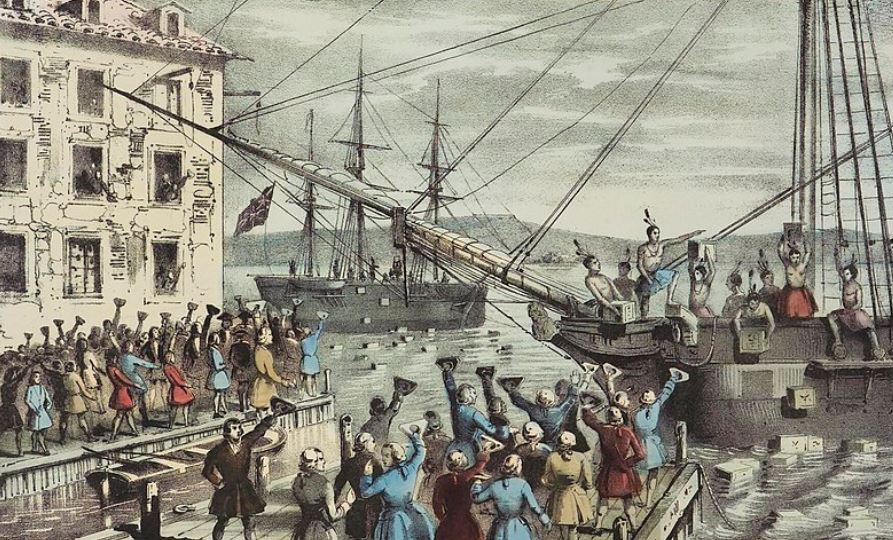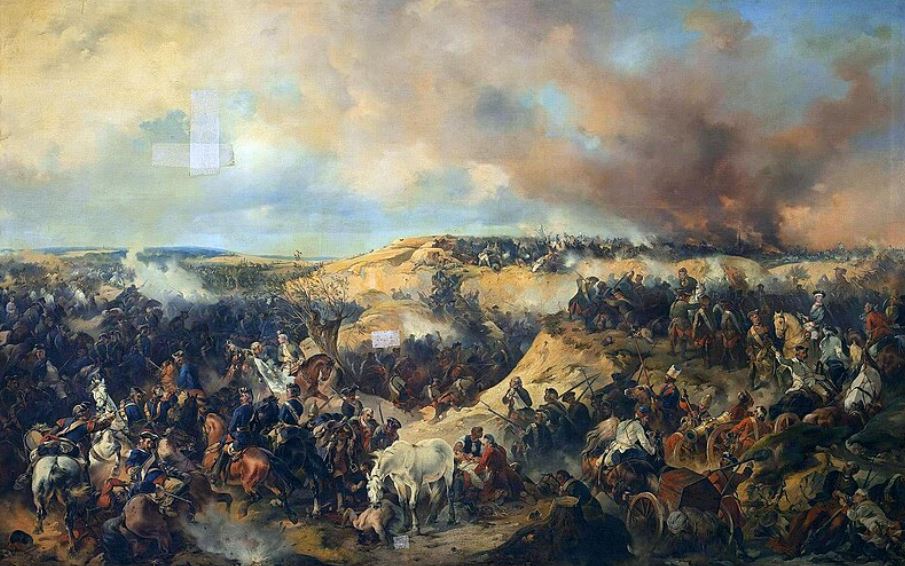What battles were fought in North Carolina during the Civil War? North Carolina saw major battles between Union and Confederate forces during the Civil War that shaped the course of the conflict and its ultimate outcome.
As a vital supply state for the South with several strategic coastal towns, North Carolina provided the backdrop for fierce fighting. Engagements like the Battle of Fort Fisher and Battle of Bentonville had wide-reaching impacts.
This article will highlight the 10 most significant Civil War battles that took place in the Tar Heel state, battles that proved decisive turning points in the war between the states.
- The Strategic Role of North Carolina during the Civil War
- 1. The Second Battle of Fort Fisher (January 15, 1865)
- 2. Battle of Bentonville (March 19-21, 1865)
- 3. Battle of New Bern (March 14, 1862)
- 4. Battle of Plymouth (April 17-20, 1864)
- 5. Battle of Roanoke Island (February 7-8, 1862)
- 6. Battle of Fort Macon (March 23 – April 26, 1862)
- 7. Battle of White Hall (December 16, 1862)
- 8. Battle of Kinston (December 14, 1862)
- 9. Battle of Averasborough (March 16, 1865)
- 10. Battle of Monroe's Crossroads (March 10, 1865)
- Further Reading
The Strategic Role of North Carolina during the Civil War
North Carolina played a vital strategic role for the Confederacy during the Civil War due to its location, resources, and transportation networks.
Geographically, North Carolina bordered multiple Southern states and the Atlantic Ocean. This allowed North Carolina to facilitate the movement of troops, supplies, and information between various fronts. North Carolina’s long Atlantic coastline also made it an important blockade-running and naval operations theater.
The state provided critical food supplies and manufactured goods to support Confederate armies. North Carolina had fertile farmland that supplied staple crops and livestock. It also had a developed railroad system and industrial base concentrated in cities like Charlotte, Raleigh, and Wilmington. These industries produced textiles, uniforms, leather goods, and other war materiel.
Several important Confederate supply depots, arsenals, and ports were located in North Carolina as well. The port at Wilmington became the main artery for blockade runners bringing crucial supplies from Europe throughout the war. The Confederacy zealously defended coastal fortifications like Fort Fisher to protect Wilmington’s naval lifeline.
Inland transportation hubs like Goldsboro were vital railroad junctions that connected North Carolina to the rest of the South. As Union forces targeted these logistical links, several key battles were fought in North Carolina to control critical infrastructure.
With its geography, natural resources, industry, and transportation networks, North Carolina was well-positioned to provide the essential economic and logistical backbone the Confederacy needed to sustain its war effort. Protecting North Carolina was a strategic priority for the South.
1. The Second Battle of Fort Fisher (January 15, 1865)
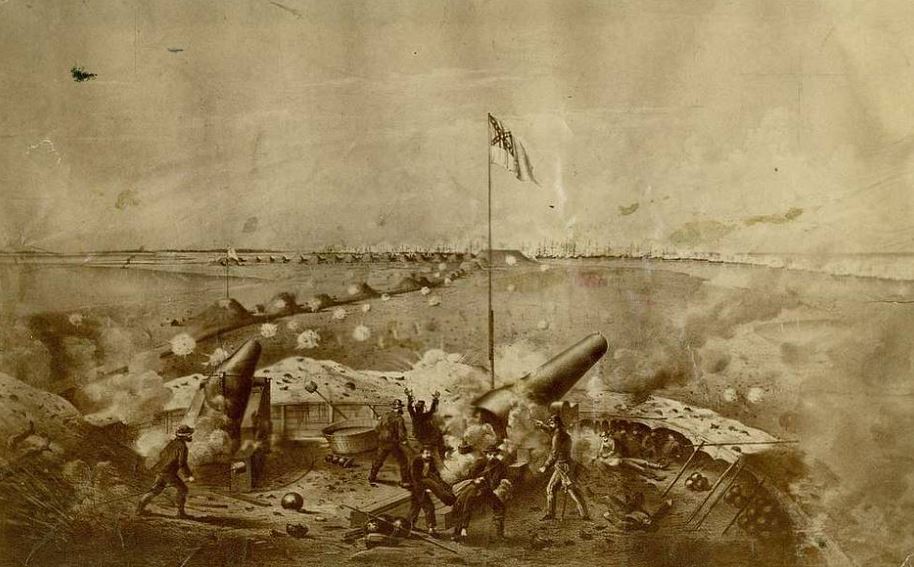
The Second Battle of Fort Fisher in January 1865 proved critical in the American Civil War, culminating in a Union victory that reshaped the war’s dynamics.
The capture of Fort Fisher, dubbed the “Gibraltar of the South,” strategically compromised the Confederacy’s last major sea port, impacting global trade and contributing significantly to the eventual defeat of the Southern forces.
The Battle Unfolds:
After failing to capture Fort Fisher in late 1864, Union forces under Major General Alfred Terry and Rear Admiral David Porter returned in January 1865 for a second assault on this vital Confederate fortification guarding Wilmington.
Defending Fort Fisher were Confederate forces led by General Braxton Bragg, who struggled to reinforce the fort’s defenses.
Terry and Porter planned a meticulous joint attack, with Terry deploying United States Colored Troops to hold off Bragg’s division while another Union division under Adelbert Ames, supported by Colonel Joseph Carter Abbott’s brigade, launched the main infantry assault.
At the same time, Porter led a naval landing force against the fort’s seaside guns.
After landing troops between Bragg and the fort on January 13th, Porter’s gunboats largely silenced the fort’s cannons by the 15th.
After intense fighting and significant casualties, the Union ultimately compelled the Confederate surrender of Fort Fisher, strategically capturing this vital port city.
Aftermath and Impact:
The fall of Fort Fisher compromised Wilmington, the last Confederate sea port, severing the South’s access to global trade. This loss resonated beyond military implications, shattering hopes for European recognition and marking a turning point in the war’s closing stages.
2. Battle of Bentonville (March 19-21, 1865)
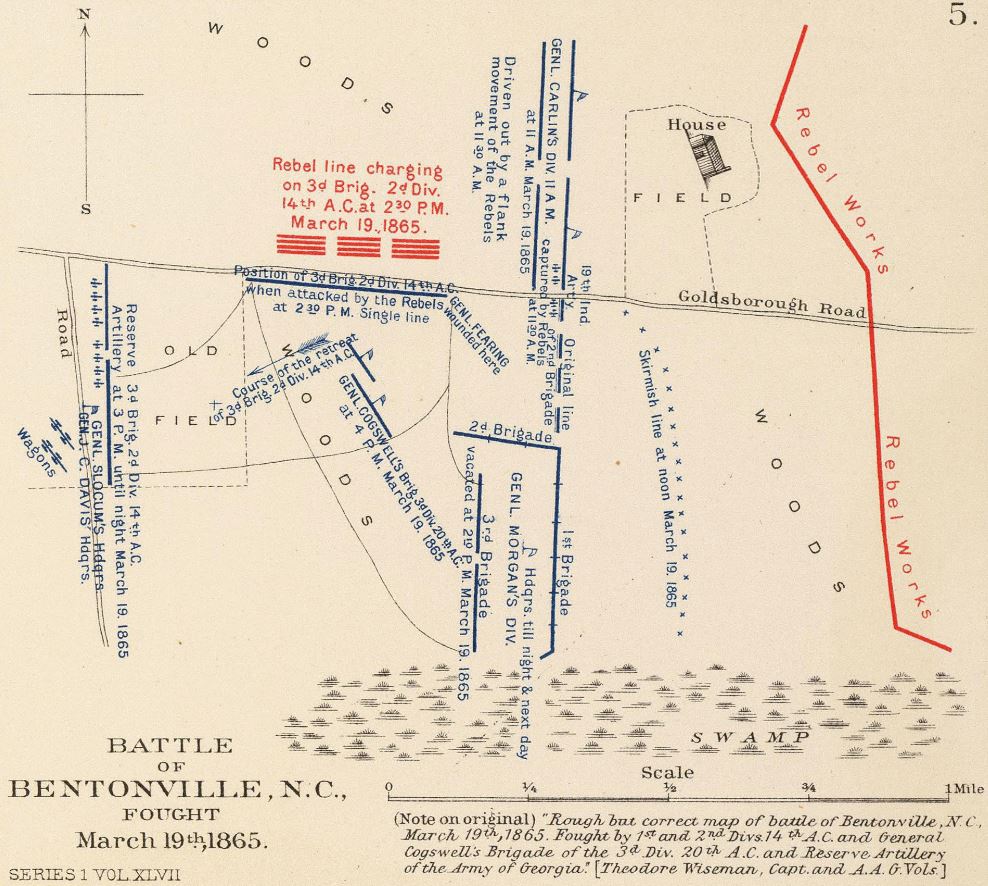
This was the largest battle fought in North Carolina, involving over 80,000 troops. The Confederates attempted to ambush Union forces but were ultimately outnumbered. It was the last major Confederate offensive in the Carolinas Campaign.
The Battle Unfolds:
The Battle of Bentonville took place between March 19 to 21, 1865.
As Union forces, led by Major General William T. Sherman, marched towards Goldsboro, they collided with Confederate General Joseph E. Johnston’s entrenched army in the heart of Johnston County, North Carolina.
The opening day saw Confederate success against the XIV Corps, yet the Union defense held steadfast.
Persistent skirmishes ensued, culminating in a Confederate counterattack failure on the third day. This marked Johnston’s strategic decision to withdraw.
The Battle of Bentonville, unfolding in these critical moments, played a decisive role in shaping the war’s final chapters and securing its place in historical significance.
The Aftermath and Impact:
The Confederate Army, suffering nearly 2,600 casualties, retreated as Sherman chose not to pursue. This strategic decision paved the way for Johnston’s surrender at Bennett Place on April 26, coupled with Robert E. Lee’s surrender at Appomattox Court House.
The Battle of Bentonville’s historical significance endures, preserved at the Bentonville Battleground State Historic Site, a National Historic Landmark, encapsulating the final chapters of the Civil War.
3. Battle of New Bern (March 14, 1862)
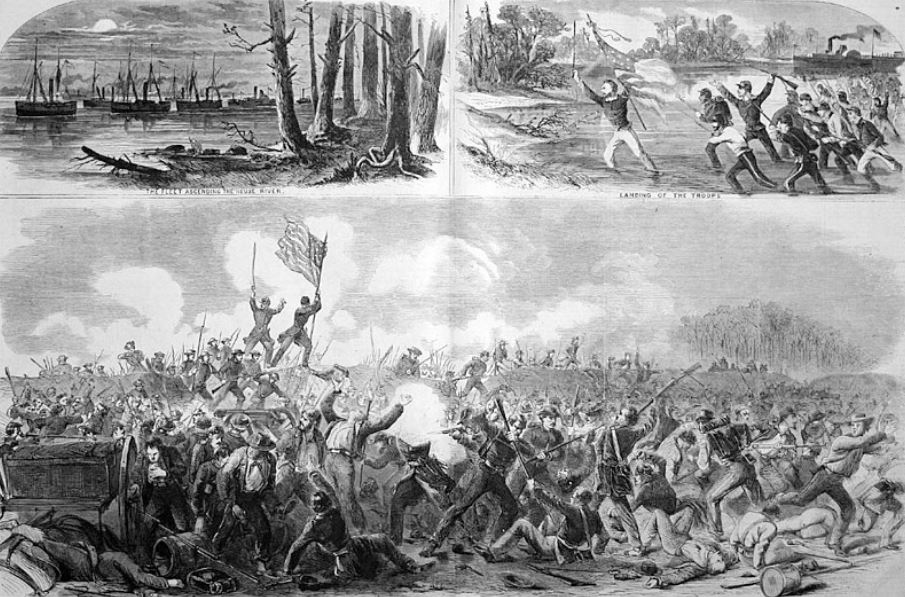
An early Union victory that gave Federal forces control of the strategic coastal town of New Bern. It was a key supply point and blockade running port.
The Battle Unfolds
Brigadier General Ambrose Burnside led the Union forces, facing off against Confederate General Lawrence O’B. Branch.
The clash near New Bern, North Carolina, showcased the stark disparity between the well-equipped Union Army’s Coast Division and the undermanned Confederate forces.
As the Union forces advanced, they encountered Confederate defenders strategically positioned behind breastworks. However, a critical weak point in the Confederate line became apparent and was exploited by the attacking Federal soldiers.
Despite the initial resistance and the defenders fighting from behind their fortifications, the Confederate center crumbled when breached. The result was a cascading effect that forced a general retreat of the entire Confederate force.
This rupture in the Confederate defense allowed Union forces to gain control of New Bern, securing a crucial victory in the Burnside Expedition.
The Aftermath and Impact:
Following the Union victory, New Bern fell under Federal control for the remainder of the Civil War. The impact was substantial; the disruption of a crucial Confederate supply link and control of key strategic locations created a domino effect. Union forces, led by Burnside, shifted focus to capturing Beaufort and Fort Macon.
The New Bern Battlefield Site, covering 25 acres, stands preserved today, a testament to the battle’s historical significance and its lasting impact on the course of the Civil War in the region.
4. Battle of Plymouth (April 17-20, 1864)
Successful Confederate attack that retook control of Plymouth from Union forces, securing the Roanoke River. The victory was temporary but underscored Confederate strength in North Carolina.
The Battle Unfolds:
The Battle of Plymouth took place in Washington County, North Carolina.
Confederate forces, under the command of Maj. Gen. Robert F. Hoke, launched a combined operation with the ironclad ram CSS Albemarle.
On April 17, they initiated an attack on the Federal garrison at Plymouth. The CSS Albemarle played a crucial role on April 19, appearing in the river and causing significant damage. It sank the USS Southfield, inflicted damage on the USS Miami, and effectively drove off other Union Navy ships supporting the Plymouth garrison. This naval engagement marked a pivotal moment in the battle.
Confederate forces successfully captured Fort Comfort, compelling Union defenders to retreat into Fort Williams. The climax occurred on April 20 when the Plymouth garrison ultimately surrendered. The citizens of Plymouth sought refuge in the basement of the Latham House during the intense and tumultuous Battle of Plymouth.
Impact and Aftermath
The Battle of Plymouth had a significant impact on the region and the course of the American Civil War. The Confederate victory showcased the significant role played by naval forces, particularly the CSS Albemarle. The engagement resulted in substantial casualties, with Union forces suffering 2,000, including the loss of two ironclads.
The Confederate successes in this battle contributed to broader strategic advantages.
5. Battle of Roanoke Island (February 7-8, 1862)
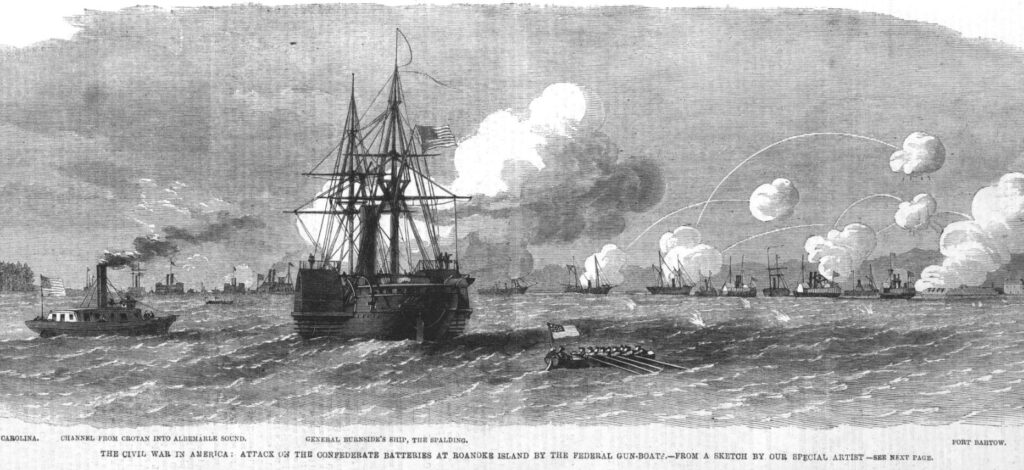
Early Union amphibious operation that captured Roanoke Island. It gave Federal forces a permanent foothold in North Carolina, threatening coastal areas.
The Battle Unfolds:
The Battle of Roanoke Island marked the opening phase of the Burnside Expedition.
Situated in the North Carolina Sounds just south of the Virginia border, the battleground played a pivotal role in shaping the course of the war.
On one side, the Union forces, comprising a flotilla of gunboats and an army division led by Brig. Gen. Ambrose Burnside. On the other, Confederate defenders, including the Mosquito Fleet and local soldiers under Brig. Gen. Henry A. Wise.
The battle saw the Federal gunboats engaging Confederate defenses, leading to Burnside’s soldiers going ashore unopposed on the first day. The Confederate position weakened, with over 2,000 casualties, setting the stage for a decisive second day.
Impact and Aftermath:
The Battle of Roanoke Island concluded with a Union victory, solidifying control over this strategically significant area.
Roanoke Island’s capture had far-reaching consequences. It remained under Union control for the rest of the war, serving as a launching pad for subsequent assaults on New Bern and Fort Macon.
The battle’s aftermath saw the establishment of the Freedmen’s Colony of Roanoke Island—a self-sustaining community for escaped slaves. This initiative, led by Union forces, aimed at providing education and employment opportunities to former slaves.
6. Battle of Fort Macon (March 23 – April 26, 1862)
Siege operation in which Union forces captured the strategic Confederate fort guarding Beaufort Harbor. Allowed Union naval forces access to the North Carolina coast.
The Battle Unfolds:
In the spring of 1862, on the Outer Banks of Carteret County, North Carolina, a pivotal event unfolded — the Siege of Fort Macon.
This battle was part of Union General Ambrose E. Burnside’s North Carolina Expedition during the American Civil War.
Fort Macon was a Third System coastal fort built after the War of 1812 that was strategically located at the eastern end of Bogue Banks. Its purpose was to defend the entrances to the crucial ports of Beaufort and Morehead City.
However, as the Civil War erupted, the fort found itself outdated, poorly supplied, and inadequately armed for the evolving nature of warfare.
Neglect had taken its toll – the woodwork rotted, ironwork rusted, and gun carriages decayed. By the time of the siege, the garrison, led by Colonel Moses J. White, faced a myriad of challenges, including sickness, dwindling morale, and a lack of proper armament.
In late March, Major General Burnside’s army advanced on Fort Macon, seeking to extend Union control over eastern North Carolina. The siege commenced.
As Union forces invested the fort with siege works, breaching its masonry walls on April 25, the Confederate defenses proved insufficient. The scarp began to collapse, leading to a decisive moment in the battle. The surrender soon followed.
Impact and Aftermath:
The Battle of Fort Macon was relatively bloodless compared to the carnage that would later characterize the Civil War.
However, the strategic implications were significant. The victory allowed Union forces to secure the region, but surprisingly, it wasn’t fully exploited. Burnside, soon recalled to aid in other campaigns, left the captured Wilmington untouched.
7. Battle of White Hall (December 16, 1862)
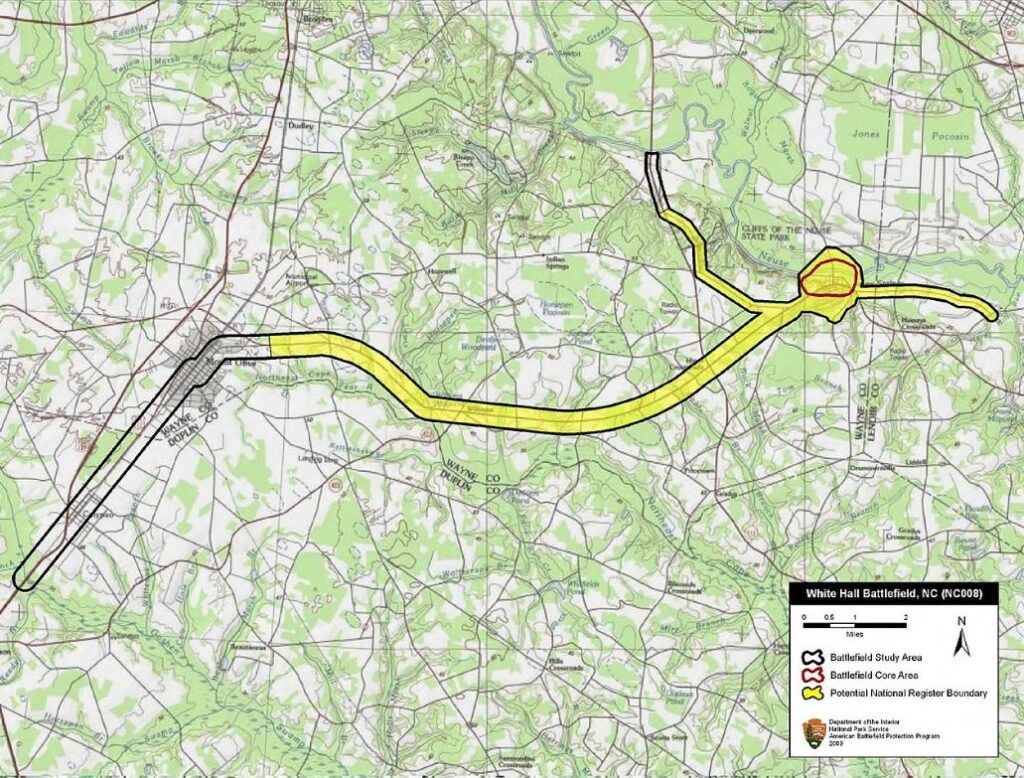
Inconclusive engagement near Goldsboro. Confederates blocked part of Union forces’ advance following the capture of Kinston.
The Battle Unfolds
Union forces, led by Brig. Gen. John G. Foster, advanced towards White Hall during the Goldsboro Expedition, encountering Confederate militia under Gen. Beverly Robertson on December 15.
Historical debates surround the alleged Union objective and whether the aim was to destroy the CSS Neuse, a Confederate ironclad boat. The plan included taking the Whitehall bridge, destroying the CSS Neuse, and proceeding to Goldsboro for a strategic rail line destruction.
Union forces bombarded White Hall with artillery fire on December 16, damaging the town and engaging Confederate defenses.
Confederates, holding a superior defensive position, burned the bridge to prevent Union crossing. The narrow position along the Neuse River allowed them to resist Union attacks.
Fearing being caught between Confederate forces from Kinston and Goldsboro, Union forces withdrew at sundown on December 16. They crossed the Neuse River between White Hall and Mount Olive, eventually engaging in Goldsboro.
Both sides claimed victory. Union forces asserted success due to damage inflicted on the CSS Neuse and the Army’s advance, while Confederates claimed victory for inflicting heavier casualties, preventing the river crossing, and safeguarding the gunboat.
Impact and Aftermath:
The Battle of White Hall left lasting impacts, including town damage, delayed construction of the CSS Neuse, and strategic shifts in the Goldsboro Expedition.
8. Battle of Kinston (December 14, 1862)
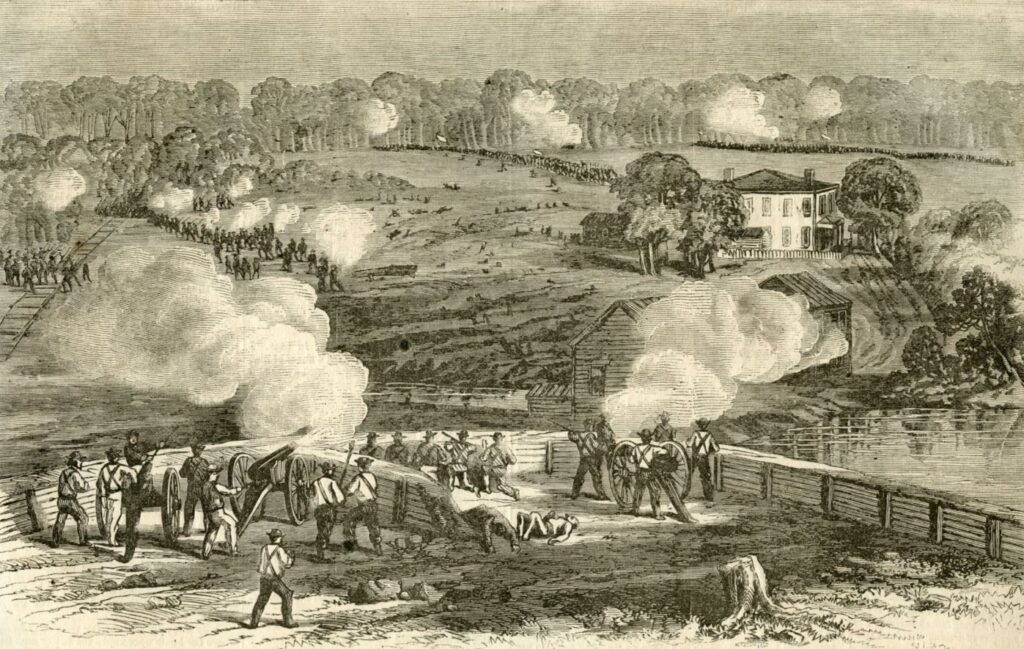
Union victory in which Federal forces captured Kinston, a vital industrial and transportation center. Part of the Union’s ” Goldsboro Expedition.”
The Battle Unfolds
The Battle of Kinston was fought in December 1862. Union forces amounting to around 10,000, under Brig. Gen. John G. Foster, were advancing towards the Confederate supply hub at Goldsboro.
A force of just 2,000 Confederate troops under Brig. Gen. Nathan G. “Shank” Evans attempted to halt their advance and defend Kinston and the bridge over the Neuse River.
On December 13, Foster’s forces flanked the Confederates by crossing the river southwest of Kinston. Then on December 14, the Union troops attacked again, turning on the Confederate’s left flank. This move forced the Confederates to retreat across the burning bridge. Many confederates were left trapped and cut off by the Union troops.
The Union secured Kinston and the bridge crossing, a strategic gain giving them a foothold in eastern North Carolina.
Impact and Aftermath
The Union victory was important for several reasons. It disrupted Confederate supplies and gave the Union controlled the town and bridge. This gave them a base in eastern North Carolina and helped shift control of the state to the Union.
9. Battle of Averasborough (March 16, 1865)
Served as a precursor to the Battle of Bentonville. Confederates attempted to stall Union forces but retreated after suffering high casualties. Showed growing Union advantage.
The Battle Unfolds
As Union General William T. Sherman’s armies continued their devastating march through the Carolinas in March 1865, Confederate forces attempted a desperate delaying action at Averasboro, North Carolina.
This little-known battle set the stage for the more famous Battle of Bentonville days later.
On March 15th, Sherman’s left wing under General Henry Slocum encountered a Confederate corps under General William Hardee near Averasboro. Outnumbered nearly 4 to 1, Hardee had orders from General Joseph E. Johnston to stall Slocum’s advance down the Raleigh Road.
Displaying skillful tactics, Hardee blocked the road and repulsed initial Union assaults on March 16th. However, Slocum ultimately flanked the Confederates from both sides, forcing Hardee to withdraw his men from their entrenchments during the night after a day of fierce fighting.
Impact and Aftermath
Although a relatively small engagement compared to other battles of the war, Averasboro held great significance. Hardee had successfully bought precious time for Johnston to gather scattered Confederate forces and establish defenses for the imminent Battle of Bentonville.
The Union forces prevailed at Averasboro, securing another hard-fought victory leading up to Confederate surrender weeks later.
10. Battle of Monroe’s Crossroads (March 10, 1865)
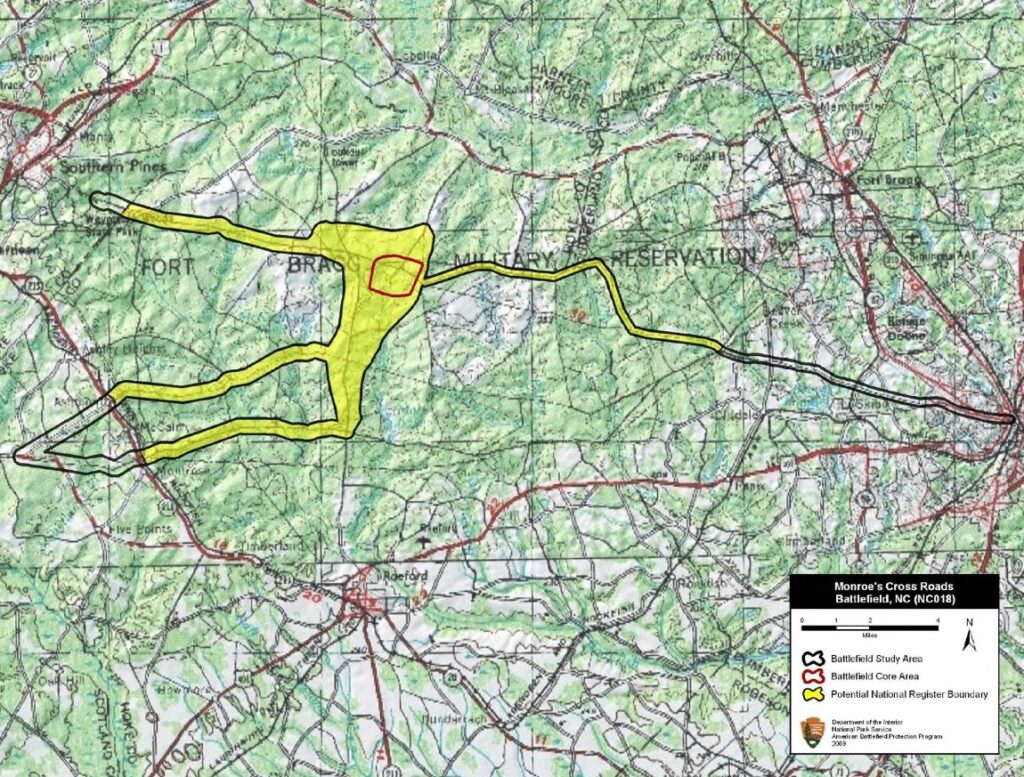
Involved Confederate cavalry and Union infantry/cavalry. Historically notable for a rare battlefield charge led by Confederate General Wade Hampton.
The Battle Unfolds
The Battle of Monroe’s Crossroads transpired on March 10, 1865, in Hoke County, NC, involving 4,500 individuals in one of the final all-cavalry clashes of the Civil War.
At dawn, Confederate cavalry, led by Hampton and Wheeler, launched a surprise attack on a vulnerable and unsuspecting Union camp, seeking to capture Kilpatrick.
Though initially routed, Kilpatrick’s Union cavalry made a decisive counterattack, compelling the Confederates to withdraw as Union infantry loomed.
Impact and Aftermath
Despite the battle’s inconclusive end, the Confederate delay granted time for organized river crossings at Cape Fear River, enabling the burning of bridges in Fayetteville and impeding the Union advance.
Further Reading
If you enjoyed this article, you may be interested to read about other American Civil War events or more general American history.

